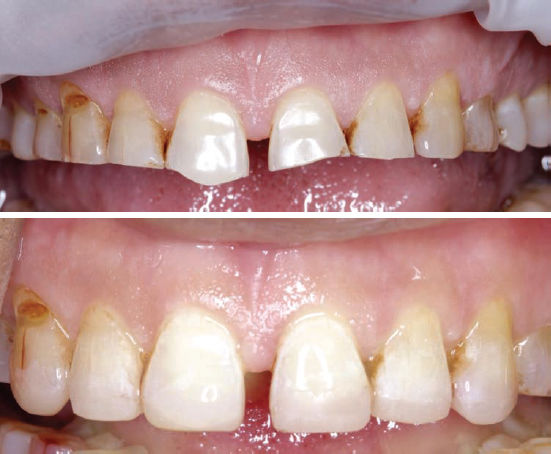Clinical Smile Evaluation
Subir Banerji and Shamir B. Mehta
Principles
In Chapter 2.3, the idea of a universal concept in dental aesthetics and beauty was briefly alluded to. While it may be comparatively straightforward to implement aesthetic changes in relation to universally determined concepts, it may not be as simple where more subjective variables are concerned.
It is important to gain an insight into your patient’s exact needs. This may be attained initially by interviewing the patient. A detailed smile evaluation questionnaire may also prove helpful.
In order to develop predictability, there is a need for a technique that permits the opportunity for all dentists to enable reversible visualisation of any planned aesthetic changes, gain informed consent and avoid unrealistic expectations. One such technique is the ‘intra-oral mock-up’ or ‘dry and try’.
Procedures
Commence with the selection of an appropriate shade of resin composite. The teeth should ideally be clean and moist, and you should take note of the background illumination.
Isolate the anterior maxillary teeth. Cotton wool rolls, a split dam technique or an alternative soft tissue retraction procedure may prove helpful. The teeth are air dried, but no effort should be made to prepare them for adhesive bonding.
Where an increase in the length of the central incisor teeth is desired, first measure the width of the tooth using a Michigan O probe with Williams markings. Apply resin composite to one of the maxillary central incisor teeth; the amount of material added should generally aim to attain a rough length to width ratio of 1.2:1. Accordingly, for an average-width maxillary central incisor with a width of 8–9 mm, a length of 10–11 mm would be deemed suitable. Where the pre-existing width may present itself as an unsuitable marker, you may also choose to measure the length of the resting vertical dimension of your patient’s face. The length of a central incisor should be approximately one-sixteenth of this length. The resting position of the upper lip should also be applied as a useful guide to determining a suitable length. Depending on your patient’s age, there should be between 0.0 mm and 3.5 mm of incisal edge display with the upper lip assuming its resting position. Where a decrease in the length of the selected tooth is desired, use a surgical marker pen to mark the desired length to attain the appropriate proportions. Figure 2.4.1 is an example of a patient presenting with a worn anterior dentition, where an intra-oral mock-up has been carried out as described.

Figure 2.4.1 Worn anterior maxillary dentition – an intraoral mock-up has been carried out using direct resin composite from which a diagnostic wax-up is produced
Now ask your patient to say the letter ‘F’ or ‘V’ and observe the relationship between the incisal edge and upper border of their lower lip. Ideally, the incisal edge should be contoured to follow the profile of the upper border of the lower lip, with a constant spatial distance of approximately 3 mm. Having re-established the relationship of the incisal edge to the ‘smile arc’ during a posed smile, repeat these steps on the contralateral tooth. It is generally thought that a male smile presents with a straighter line, while a female smile is more curved.
Stay updated, free dental videos. Join our Telegram channel

VIDEdental - Online dental courses


